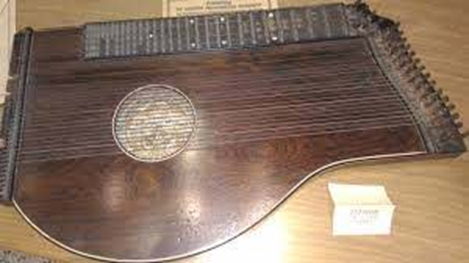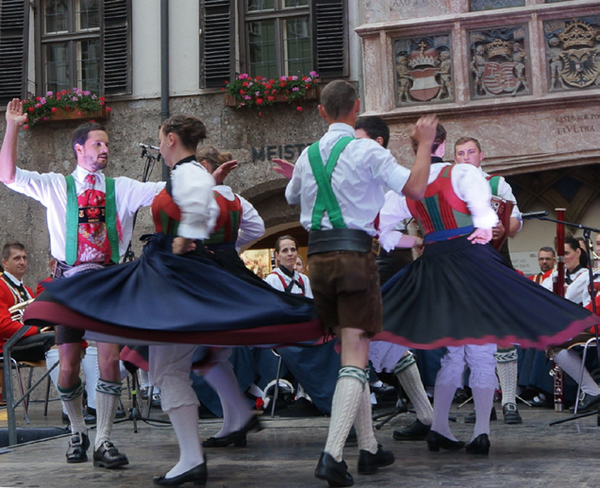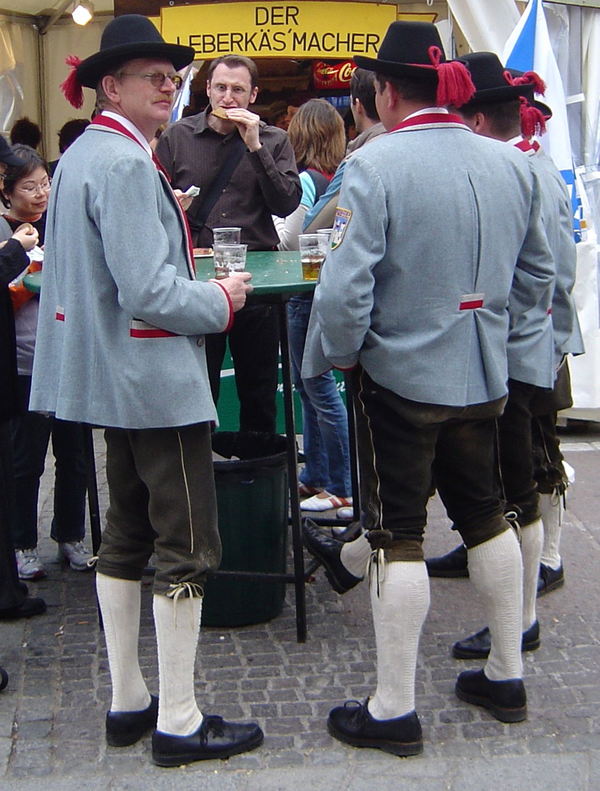The music from the Alps

알프스에는 소통을 위한 특유의 음악 스타일 ‘요들’이 있다. 요들은 깊은 알프스 산속에서 돌담과 절벽의 반사작용을 이용해 먼 거리를 뚫고 소통하기 위해 특별히 만들어진 것이다. ‘요들’은 자연의 높은 간섭에도 불구하고 예, 아니오, 고음, 저음 등의 간단한 창법을 이용하여 수백 미터에서 그 이상까지도 소통이 가능하다.
여기에서 중요한 점은 소리의 증폭을 위한 좁은 계곡 등 소리 전송에 좋은 위치 선정이다. 브리태니커에 의하면, ‘요들’은 높은 가성과 낮은 흉성이 빠르게 교차하는 가창법으로, 큰 음정 차가 있는 저음과 고음에 각각 열린 모음과 닫힌 모음을 붙여 발성함으로 쉽게 부를 수 있다고 한다. 약 200년 전부터 ‘요들’은 고산 지대 음악의 한 부분이 되었고 국제적으로도 인정을 받게 되었다.

오스트리아에는 악기 반주와 관계없이 간단한 노래부터 캐논 형식까지, 돌림노래 등 다양한 형식의 노래가 있다. 위키피디아에 의하면, 음악에서 캐논은 선행 성부(예: 한 쿼터, 한 소절 등) 후에, 선행 성부에 나왔던 하나 이상의 멜로디를 모방하여 다른 성부가 따라하게 하는 대위법 기반의 음악 형식이다. 선행 성부를 리더, 따라하는 모방 성부를 팔로워라고 하며 그 리듬과 간격을 정확히 복제해서라도 반드시 리더를 모방한다.
캐논은 ‘요들’뿐만 아니라 1770년경에 만들어진 ‘민요’라고 불리는 지방 음악에도 널리 쓰인다. ‘민요’의 가장 오래된 구전 음악은 1488년까지 거슬러 올라가는데 즉흥, 변주, 단순한 하모니가 특징이다. 대표적인 보조 악기로는 하모니카와 아코디언, 핵브렛(양금과 유사), 지더(가야금과 유사), 스위스의 긴 파이프 악기 알펜호른 등이 있다.

원래 ‘민요’는 매우 지역적이어서, 널리 퍼지지 않고 각 계곡 안에서만 연주되었으나, 셸락과 LP 음반이 나온 후 음악이 녹음되고 오스트리아 전역으로 그 다음에는 전 세계로 더 널리 소개되기 시작했다. 오늘날에는 ‘민요’가 매우 인기를 끌면서, 전 세계 사람들이 오스트리아의 민요를 잘 알게 되었다.

특히 대부분의 알프스 마을에서 여름 행사가 열리는 동안, 구전과 기악은 민속춤에 흥겨운 분위기를 만든다. 가장 인기 있는 춤 중 하나는 ‘랜들러’로 이 단순한 춤은 4분의 3박자 곡으로 깡충깡충 뛰며 발을 구르고, 댄서들은 서로 엇갈리게 손을 잡고 춤을 추다가, 손을 잡은 채로 돌아서고, 뱅뱅 돌며 나아간다. ‘랜들러’는 알프스 고지대 작은 마을에서 인기가 있고 춤출 때 튼튼한 신발이 필요한데, 반면에 도시 스타일의 왈츠에는 동작과 회전을 쉽게 할 수 있는 가죽 밑창의 가벼운 플랫슈즈가 좋다.
물론 산지에서도 춤출 때는 멋진 드레스를 입는데 도시와 달리 유용하고 튼튼한 드레스다. 알프스에서 가장 튼튼한 재료는 수사슴 또는 영양의 가죽으로 ‘빌트레더’라 한다. 이 가죽은 숨쉬기에도 편하고 부드러울 뿐만 아니라 여름에는 시원하고 겨울에는 따뜻하다. 남성용 바지는 ‘레더호스’라고 하며 한국 바지보다 좀 더 튼튼한 편이고 리넨 셔츠와 함께 입는다. 여성은 상단에 실크 자수를 놓은 고운 천의 멋진 드레스 ‘딘덜’을 입고, 그 위에 여러 번 두드리고 누르고 말려 방수에 공기가 통하는 재킷 ‘로든’을 걸친다. 이 재킷은 남녀 공용으로 요즘 한국에서도 인기가 많다. 각 계곡과 마을마다 의상에 고유의 디자인을 갖고 있어, 전문가들은 산지 사람의 복장만 보고도 출신지를 파악한다.

The music from the Alps
In the European mountain area, a special communication and music style was created. Many of you have heard about “Jodeln” a special creation of communication within high mountain over long distance by use of reflexion of stone walls and cliffs. “Jodeln” is using a simple ton-nation that the receiving party understand yes, no, up, down, etc. even at high interference. Communication can be done over several 100m even km. Important is the right location for transmitting eg. narrow valleys for amplification.
What is “Jodeln”? According to Encyclopaedia Britannica: “Jodeln, type of singing in which high falsetto and low chest notes are rapidly alternated; its production is helped by the enunciation of open and closed vowels on the low and high notes of wide intervals”. Since about 200 years “Jodeln” became part of the mountain style music and became international recognized. Many of the Austrian county songs using this style, with and without instrument support.
Different varieties are created, starting from a simple song up to Canon with several participants each starting at different time. According to Wikipedia: “In music, a canon is a contrapuntal (counterpoint-based) compositional technique that employs a melody with one or more imitations of the melody played after a given duration (e.g., quarter rest, one measure, etc.). The initial melody is called the leader (or dux), while the imitative melody, which is played in a different voice, is called the follower (or comes). The follower must imitate the leader, either as an exact replication of its rhythms and intervals”

Canon is not only popular at “Jodeln” but also in county style music so called “Volksmusik” a definition created around 1770. “Volksmusik” compose of several sectors, the oral the oldest records are dated back to 1488 characterized by improvisation, variation and simple harmonies. Typical supporting instruments are “Harmonica and Accordion”, “Hackbrett” (similar to Yanggum 양금), “Zither” (similar to Gayageum 가야금) and in Switzerland only the “Alpenhorn” a long Pipe type instrument. Originally “Volksmusik” was very localized, only played within each valley, not distributed outside. Since the introduction of Shellacs and LPs, music was recorded and started to be introduced to a wider audience, first within Austria, then all over the world. Nowadays “Volksmusik” become very popular, many people all over the world know Austrian folk songs.

The two sectors, the Oral and Instrumental are creating a wonderful environment for folk dancing, especially during the many summer events held in most of the villages in the alps. One of the most popular dances is the “Landler” a simple dance features hopping and stamping with music in 3/4 time, the dancers turn under each other’s arms using different arm and hand holds, dance back to back, and grasp each other firmly to turn around and around. Still the “Landler” is popular in small villages high in the alps where strong shoes needed to reach the dancing place, rather the city stile Walz where it is recommended use of light shoes with flat leather sole to move and turn more easily.
Of course, going dancing requires nice dress and in the mountain area the dress is different than in the city, it must be usefull and robust. The most robust material in the Alps is leather. The leather is be from Hirsch (stag or tier) or Gams (chamois). This leather is called “Wildleder” which allows the bearer to breathe comfortable, it is soft as well as flexible, cool in summer and warm in winter. The trousers worn by the men is called “Lederhose” together with a shirt made of linen, a little bit stronger than the Korean one. For women a nice dress made of fine cloth with sometime silk embroilment top is called “Dirndl” mostly covered by a nice jacket made of “Loden” a special made wool which is hammered, pressed, dried several times to make it waterproof, but air exchange as well. The jackets are made for men and women are very useful and getting popular in Korea nowadays. Each Valley and each Village has its own design, specialists can figure out where this person is coming from.
글 | 볼프강 슬라빈스키 Wolfgang Slawinski
한·오스트리아협회 부회장, 서울명예시민

